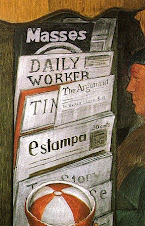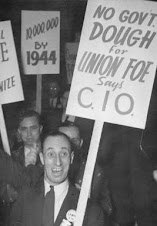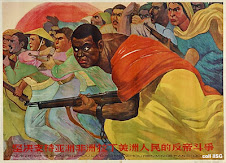
By Martha Grevatt
Managua, Nicaragua
Published Sep 11, 2011 10:03 PM
When Nicaraguan workers flash the “V” for victory, it has a double meaning. The two fingers represent the number two ballot position for President Daniel Ortega, who is running for re-election in the Nov. 6 elections. Polls show Ortega, the candidate of the Sandinista Front for National Liberation (FSLN), leading with 57 percent against five opposition candidates.
The FSLN is named for liberation fighter Augusto César Sandino, who was murdered by U.S. Marines in 1933. In 1979, guerrilla fighters from the front overthrew the hated, U.S.-backed dictatorship of Anastasio Somoza. A five-member “junta” that included Ortega took over leadership. In 1984 Ortega was elected president.
From 1981 to 1990 the U.S. engaged in economic sabotage against Nicaragua and financed the “contras,” counterrevolutionaries who waged a war of terror that cost 40,000 to 50,000 lives. In 1990, Ortega lost to opposition candidate Violeta Chamorro, whose campaign was heavily funded by the U.S.
The Chamorro government immediately pursued a pro-capitalist path of privatizing public industries and returning to their former owners enterprises that had been seized by exploited workers. These so-called free market reforms, demanded by the International Monetary Fund, continued under subsequent pro-Washington regimes.
The Nicaraguan working class did not throw in the towel. On the contrary, the Frente Nacional de Trabajadores (National Workers Front) was founded after the Chamorro victory by seven unions representing teachers, health care workers, agricultural workers and white-collar professionals. The FNT, which was formed to “achieve unity of the union movement and fight against neoliberalism,” supports the FSLN candidates.
Since 2006, when Ortega was returned to office, the government has taken major steps to reduce poverty and inequality and put the well-being of the Nicaraguan people first.
Dr. Paul Oquist, currently President Ortega’s minister for national policies, outlined these developments in detail for delegates to the Encuentro Sindical Nuestra América (Union Meeting of Our America), held in Managua, Nicaragua, on Aug. 25-27.
The FSLN-led government favors redistribution of wealth. It gives assistance to small farmers and thousands of worker-owned and -run cooperatives, not to big agribusiness as in the U.S. Under the FSLN, the cost of living for an average family has gone down while minimum salaries have doubled.
While foreign capitalism retains a solid presence — McDonald’s, Subway, Coca-Cola, Exxon, etc., are all over Managua — the gap between the highest and lowest household incomes has narrowed dramatically.
Illiteracy, which the first FSLN government had worked to eradicate but which stood at 22 percent in 2006 after 16 years of pro-U.S. regimes, is now down to 3 percent. Infant mortality is down to 22 per 1,000 live births and pregnancy-related deaths have been reduced. Most children have received vaccinations. Free health care and free education are defined as rights in the constitution.
Based on per capita income, Nicaragua is the second-poorest country in the Western Hemisphere. Oquist considers Nicaragua’s advances to be particularly significant in light of the current capitalist crisis, which has caused incomes to fall worldwide.
A stroll around downtown Managua shows the commitment to people. This writer encountered an optician providing free eyeglasses to senior citizens, posters and brochures for campaigns against child sexual exploitation and for HIV prevention, and an office that provides free conflict resolution for disputes between neighbors, coworkers and family members.
Working class backs Sandinistas
The FNT is a force in Nicaragua. While membership is voluntary, most workers opt to join. The health care union Fetsalud, for example, counts 80 percent of the workers it represents as members. The FNT’s progressive politics are exemplified by a March 30 statement, still at the top of its Web page, condemning the war against Libya.
Young union members are among the most active. Hundreds of youthful workers proudly waved red and black FNT flags during a rally Aug. 25 to support the Cuban Five, who are imprisoned in the U.S. These same young volunteers made sure the union meeting ran smoothly: they handled registrations, kept the coffee pots and water coolers full, made copies of documents and nailed together the platform for the closing ceremony with Ortega.
During downtime between sessions, the young volunteers got everyone moving to a popular campaign song: a barely recognizable version of the R and B classic, “Stand by Me,” with a dance beat and new words “Again, again Nicaragua will triumph, with peace, love and dignity.”
In poor and working-class neighborhoods, homes are decorated with FSLN flags, graffiti and election campaign paraphernalia. It’s hard to find any expressions of support for the opposition candidates.
This year the Bolivarian Alliance for the Americas, ALBA, helped the Nicaraguan government create permanent housing. ALBA was initiated by Venezuelan President Hugo Chávez and includes Cuba, Nicaragua, Bolivia, Ecuador, St. Vincent and the Grenadines, Antigua and Barbuda, and Dominica. Out of this came the Heroes of Nemagon housing project for the families of banana pickers.
For almost 20 years the Association of Former Bananeros has been fighting the Dole Food Co. to get compensation for terminal illness and sterility caused by a toxic pesticide not even used in the U.S. called Nemagon. WW spoke to four members of the association.
“They are all sick,” said Association President Altagracia del Socorro, pointing to the vice president, secretary and another comrade. She showed me a large lesion on her own forearm. “Skin cancer.” Their lawsuit against Dole is still tied up in U.S. courts.
Until recently they lived in tents erected outside the National Assembly in Managua to draw attention to their cause. They now collect pensions and live in comfortable housing.
The ex-bananeros told me they are hoping for two things: a Sandinista victory Nov. 6 and for Hugo Chávez, who is also battling cancer, to make a speedy recovery.










































1 comment:
Interesting article. I didn't know the Sandinistas were still around in Nicaragua.
Post a Comment